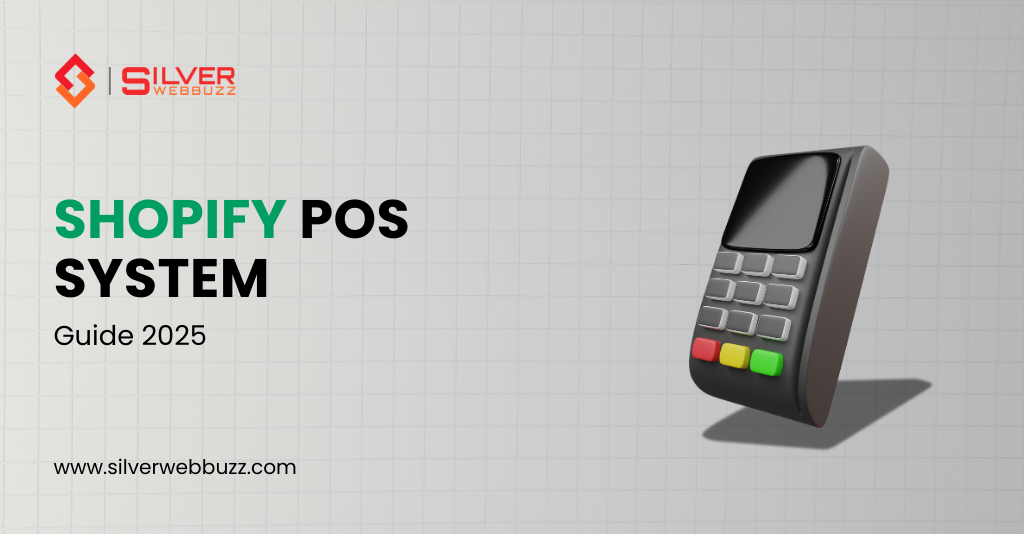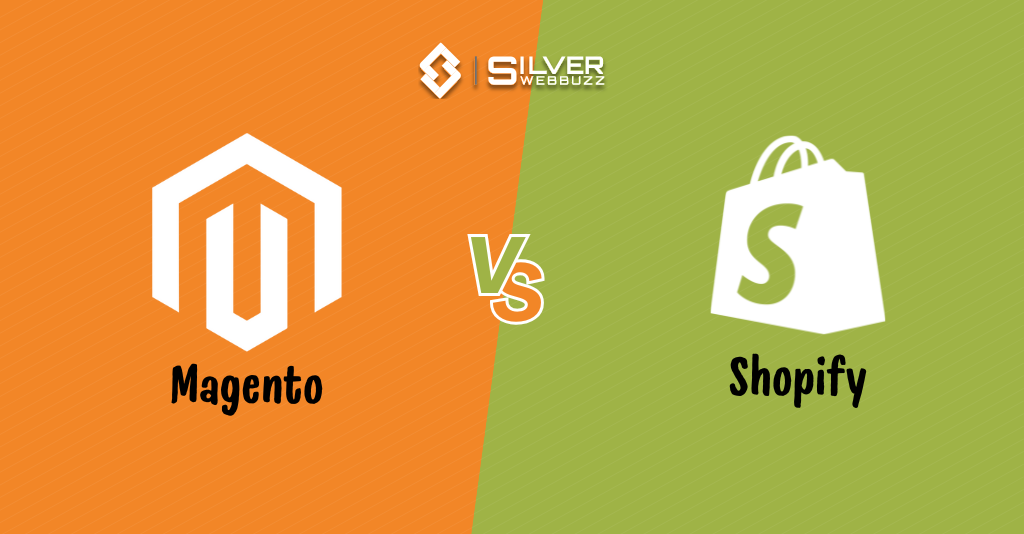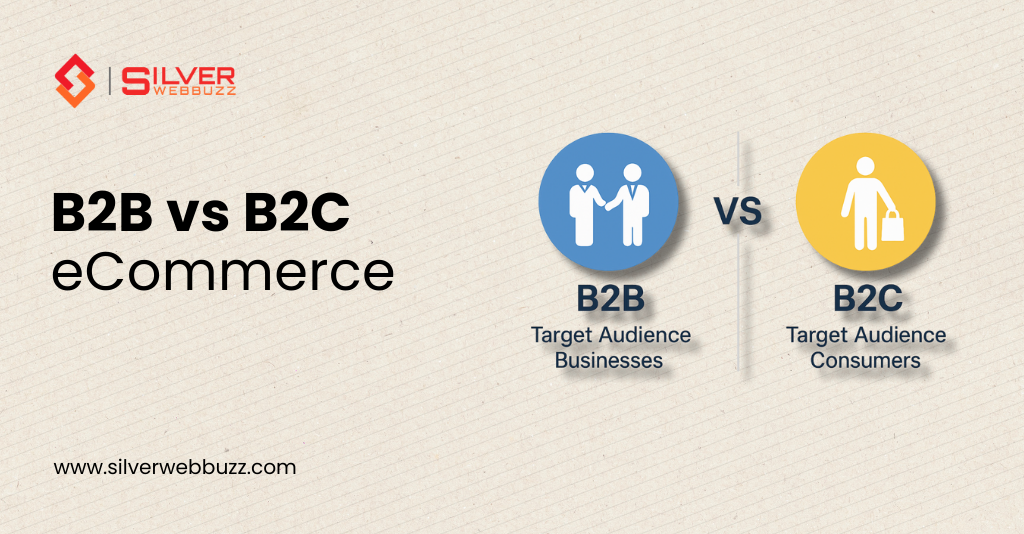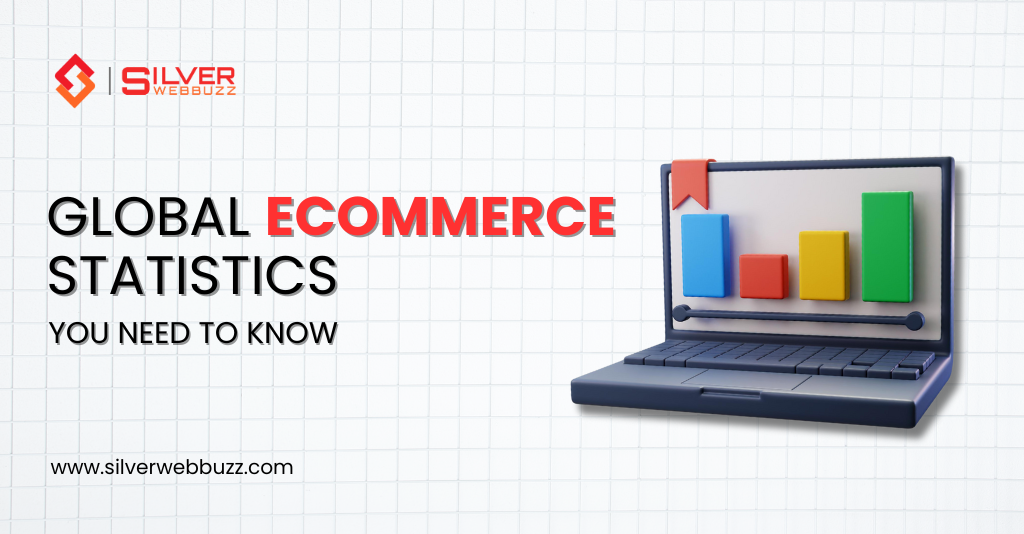In today’s fast-moving retail landscape, customers expect more than just a simple checkout experience. They want speed, flexibility, and the option to shop both online and in-store without friction. This shift is exactly where the Shopify POS (Point of Sale) system comes in.
Shopify POS is more than a cash register replacement—it’s a unified retail solution that connects your physical store with your online Shopify shop. Whether you run a boutique, a coffee shop, or a growing DTC brand expanding into offline sales, Shopify POS helps you:
- Accept payments seamlessly in-store.
- Sync inventory across online and offline channels.
- Manage staff and customer data in one place.
- Unlock powerful insights to grow sales.
For retailers navigating 2025, this system is not just about transactions—it’s about creating memorable shopping experiences that keep customers coming back. In this guide, we’ll explore exactly how the Shopify POS system works, its features, pricing, and whether it’s the right fit for your business.
How the Shopify POS System Works
At its core, the Shopify POS system is designed to bring your online and offline sales under one roof. Instead of managing separate tools for eCommerce and physical retail, you get a single platform that keeps everything in sync—inventory, customer data, sales, and payments.
Here’s a breakdown of how it works in practice:
1. Device & App-Based Setup
Shopify POS runs through a mobile app that works on iOS and Android devices. Once installed, you can connect it with compatible hardware like barcode scanners, receipt printers, and card readers. This makes it highly flexible—you don’t need bulky equipment to get started.
2. Seamless Payment Processing
Using Shopify Payments or third-party gateways, you can accept credit cards, debit cards, contactless payments, and even gift cards. Every sale is automatically logged inside your Shopify dashboard.
3. Inventory Management
Inventory is synced across your Shopify online store and physical retail location. If a customer buys an item online, your in-store stock updates instantly, and vice versa. This eliminates overselling and gives you accurate real-time data.
4. Customer Profiles & Insights
Every time a shopper makes a purchase—online or in person—the system captures their information, purchase history, and preferences. This helps retailers offer personalized promotions, loyalty programs, and targeted campaigns.
5. Omnichannel Checkout Experience
Shopify POS makes it easy for customers to:
- Buy online and pick up in-store.
- Purchase in-store and have items shipped directly to their home.
- Use discount codes across both online and offline purchases.
6. Centralized Reporting
All your sales, refunds, and staff activities are tracked in one central dashboard. This reporting isn’t just about numbers—it gives you insights into your best-selling products, peak shopping hours, and customer behavior.
In simple terms, Shopify POS acts as the operating system for modern retail stores, bridging the gap between online and offline commerce so retailers can focus on growth, not technical headaches.
Key Features of Shopify POS You Should Know
The Shopify POS system isn’t just about processing payments—it’s a full suite of tools designed to simplify retail operations and boost sales. Whether you’re running a single pop-up shop or managing multiple retail locations, here are the standout features you should know.
1. Shopify POS Lite
- Included with every Shopify plan at no extra cost.
- Designed for small retailers or businesses that need a basic in-person selling tool.
- Features include simple checkout, order tracking, customer profiles, and basic inventory management.
- Works seamlessly with mobile devices, making it ideal for pop-ups, markets, and small boutiques.
2. Shopify POS Pro
- A premium upgrade offering advanced features for scaling businesses.
- Includes everything in Lite, plus:
- Smart inventory management across multiple locations.
- Advanced staff permissions and roles.
- Omnichannel features like buy online, pick up in-store.
- Robust reporting and analytics.
- Perfect for retailers with multiple stores or higher transaction volumes.
3. Customizable Checkout
Shopify POS allows you to personalize the checkout process with:
- Custom discounts and promotions.
- Split payments (cash, card, gift card).
- Quick product lookups and saved carts.
4. Integrated Payments & Hardware Support
- Accepts chip, tap, and swipe payments with Shopify card readers.
- Compatible with barcode scanners, receipt printers, and cash drawers available from the Shopify Hardware Store.
5. Inventory Management
- Real-time stock syncing between your Shopify online store and POS.
- Alerts for low inventory.
- Ability to transfer stock between store locations.
6. Customer Management
- Build customer profiles with purchase history.
- Enable loyalty programs, gift cards, and personalized discounts.
- Capture customer emails for marketing campaigns.
7. Reporting & Analytics
- Track sales, refunds, and staff performance in real time.
- Detailed reports on best-selling products and peak hours.
- Data-driven insights to help optimize inventory and marketing strategies.
8. Multi-Location Selling
For growing retailers, Shopify POS supports multiple store locations under one dashboard, making it easier to manage stock and staff across your entire business.
In short: Shopify POS Lite is great if you’re just starting, while Shopify POS Pro gives you the tools to manage and scale a full-fledged retail operation.
Benefits of Using Shopify POS for Retailers
Investing in a POS system isn’t just about taking payments—it’s about making your retail business smarter, more efficient, and more profitable. Here are the biggest benefits of using Shopify POS for modern retailers.
1. Unified Online and Offline Selling
Instead of juggling multiple systems, Shopify POS keeps your online store and physical locations connected. Your inventory, sales, and customer data all update in real-time. This means no more overselling, missed opportunities, or frustrated customers.
2. Seamless Customer Experience
Customers expect flexibility in 2025. With Shopify POS, you can:
- Let shoppers buy online and pick up in-store.
- Offer local delivery options.
- Accept returns and exchanges across channels.
This level of convenience not only keeps customers happy but also builds brand loyalty.
3. Smarter Inventory Control
Stockouts and overstocking are costly mistakes. Shopify POS gives you a clear view of your inventory across every channel. You’ll know exactly when to reorder, which products move fastest, and how to allocate stock across locations.
4. Better Staff Management
With Shopify POS Pro, you can assign roles and permissions for your staff. For example, cashiers can process sales while managers access reports. This keeps operations smooth while maintaining security.
5. Data-Driven Decision Making
Shopify POS isn’t just a sales tool—it’s an insights engine. Reporting dashboards show:
- Your best-selling products.
- Peak shopping times.
- Staff performance.
Armed with this data, you can make smarter decisions about promotions, staffing, and stock.
6. Scalability for Growth
Whether you start with one shop or expand to multiple retail locations, Shopify POS scales with your business. You can add new stores, sync inventory across them, and manage everything from a single dashboard.
7. Cost-Effective Solution
Compared to many traditional POS systems, Shopify POS is affordable, flexible, and easy to set up. Shopify POS Lite even comes free with any Shopify subscription—perfect for small businesses testing retail waters.
Bottom line: Shopify POS is more than a tool for checkout—it’s a retail growth partner. It helps retailers save time, reduce errors, and deliver the seamless shopping experiences customers demand today.
Shopify POS Lite vs Shopify POS Pro: A Detailed Comparison
When choosing between Shopify POS Lite and Shopify POS Pro, the right option depends on your business size, sales volume, and operational needs. Let’s break it down.
Shopify POS Lite
Cost: Free with every Shopify plan.
Best for: Small retailers, pop-up shops, market vendors, or anyone needing a simple in-person selling tool.
Key Features:
- Simple checkout system.
- Accepts major payment methods.
- Basic order and product management.
- Works with mobile devices (no heavy hardware required).
Shopify POS Pro
Cost: $89/month per location (in addition to your Shopify plan).
Best for: Growing retailers with multiple staff, locations, or advanced retail needs.
Key Features:
- Advanced inventory management.
- Staff roles and permissions.
- Omnichannel shopping features (buy online, pick up in-store).
- Advanced analytics and reports.
- Unlimited registers per location.
| Feature | Shopify POS Lite (Free) | Shopify POS Pro ($89/month per location) |
|---|---|---|
| Price | Included in all Shopify plans | $89/month per location |
| Payment Processing | ✔ Yes | ✔ Yes |
| Basic Inventory Management | ✔ Yes | ✔ Yes |
| Advanced Inventory Tools | ✘ No | ✔ Yes |
| Multi-Location Support | ✘ Limited | ✔ Full |
| Staff Permissions | ✘ Basic | ✔ Advanced |
| Omnichannel Features | ✘ No | ✔ Yes (BOPIS, ship-to-home, etc.) |
| Advanced Reporting | ✘ No | ✔ Yes |
| Hardware Integration | ✔ Basic | ✔ Full (barcode scanners, printers, etc.) |
| Loyalty & Discounts | ✔ Basic | ✔ Advanced customization |
Which One Should You Choose?
- If you’re just getting started with physical retail or running occasional pop-up shops → Shopify POS Lite is enough.
- If you’re managing multiple staff, want advanced inventory tracking, or plan to expand to multiple locations → Shopify POS Pro is worth the investment.
Think of Lite as your starter kit and Pro as your scaling solution.
Hardware and Tools Needed for Shopify POS
While Shopify POS runs as a mobile app on iOS and Android devices, most retailers enhance their setup with hardware that makes checkout faster, smoother, and more professional. The good news is that Shopify POS works with both Shopify’s official hardware and many third-party options.
Essential Shopify POS Hardware
Here’s what most retailers use to create a complete POS setup:
1. Shopify Card Readers
- Accept chip, swipe, and tap payments.
- Mobile, wireless, and easy to set up.
- Designed to work seamlessly with the Shopify POS app.
2. Barcode Scanners
- Speeds up checkout by scanning product barcodes.
- Reduces human error in pricing.
- Works with both Shopify and third-party models.
3. Receipt Printers
- Print receipts for customers on demand.
- Shopify sells compact printers that connect via Bluetooth, Wi-Fi, or Ethernet.
4. Cash Drawers
- Sync with your POS system to open automatically after each cash sale.
5. iPads & Stands
- iPads act as the “main POS screen.”
- Shopify offers sleek stands that make the setup feel like a professional checkout counter.
Third-Party Hardware Compatibility
Shopify POS is flexible—it supports many third-party devices, which can be especially helpful if you already own some hardware. For example:
- Certain Epson and Star Micronics receipt printers are compatible.
- Many Socket Mobile barcode scanners integrate seamlessly.
- Standard cash drawers that connect to supported receipt printers often work fine.
Tip: Before purchasing third-party hardware, always check Shopify’s official compatibility list to avoid setup headaches.
Shopify Hardware Store
If you want a plug-and-play experience, Shopify’s official Hardware Store is the easiest option. Retailers can buy bundles or individual devices that are guaranteed to work with Shopify POS. This removes the risk of incompatibility and simplifies support.
Bottom line: You don’t need every piece of hardware to start. Many retailers begin with just an iPad + card reader and expand later. The flexibility to mix Shopify and third-party devices makes the system affordable and scalable.
Setting Up the Shopify POS System Step by Step
Getting started with the Shopify POS system is straightforward. Whether you’re setting it up for a pop-up shop or a multi-location retail business, the process only takes a few steps.
Step 1: Download the Shopify POS App
- Go to the App Store (iOS) or Google Play (Android).
- Search for “Shopify POS” and install the app on your device.
- Log in with your Shopify account credentials.
Step 2: Add Your Retail Location
- In your Shopify admin, go to Settings > Locations.
- Create a new location (e.g., “Main Street Store”).
- Assign products and inventory to this location.
Step 3: Connect Your Hardware
- Pair your card reader via Bluetooth.
- Connect barcode scanners, receipt printers, or cash drawers if needed.
- Test each device to ensure smooth operation.
Step 4: Set Up Products for POS
- Go to your product list in Shopify.
- Enable “Available for POS” for the items you want to sell in-store.
- Assign correct inventory quantities for each retail location.
Step 5: Customize Checkout Settings
- Add payment methods (Shopify Payments, gift cards, cash).
- Set up taxes and discounts.
- Configure staff permissions (if using Shopify POS Pro).
Step 6: Test a Transaction
- Run a test checkout with a small item.
- Confirm that payment, receipt printing, and inventory updates work correctly.
Step 7: Train Your Staff
- Walk employees through the POS system.
- Show them how to process sales, apply discounts, and handle returns.
- If using Pro, assign roles (e.g., cashier, manager) for better control.
Pro Tip: Start small—set up one location, test it, and then scale. This way, you’ll catch potential issues before rolling it out across multiple stores.
With setup complete, you’re ready to start selling in-person with Shopify POS. Everything will sync automatically with your online store, giving you a unified view of your retail operations.
Shopify POS Pricing and Plans Explained
One of the first questions retailers ask is: “How much does Shopify POS cost?” The answer depends on your plan, hardware needs, and transaction volume. Let’s break it down.
Shopify POS Lite (Included with All Plans)
Cost: Free (included with every Shopify subscription).
Best For: Pop-up shops, small businesses, single-location retailers.
Key Features:
- Accept in-person payments.
- Basic checkout (no staff permissions, limited reporting).
- Sync with your online store inventory.
If you already have a Shopify online store, you can start using POS Lite right away—no extra fees.
Shopify POS Pro (Advanced Retail Features)
Cost: $89 per month, per location.
Best For: Multi-location retailers, growing brick-and-mortar businesses.
Key Features:
- Advanced inventory management.
- Unlimited staff roles & permissions.
- Omnichannel selling (buy online, pickup in-store, exchanges).
- Advanced reporting.
- Local pickup & delivery options.
Think of POS Pro as the “full retail toolkit” that scales with your business.
Hardware Costs
Depending on how you want to set up your checkout, you may need:
- Card Reader: $49 (compact, Bluetooth-enabled).
- Retail Kit: $219 (includes stand, reader, dock).
- Barcode Scanner: $229.
- Receipt Printer: $299.
- Cash Drawer: $139.
You can start small with just a card reader and upgrade hardware as your store grows.
Transaction Fees (Shopify Payments)
Shopify POS integrates with Shopify Payments, meaning you don’t need third-party processors.
In-Person Rates (USA):
- Basic Plan: 2.7%
- Shopify Plan: 2.5%
- Advanced Plan: 2.4%
No hidden setup fees—just the per-transaction rate.
If you use an external payment provider, Shopify charges an additional fee (0.5%–2% depending on plan).
| Feature/Provider | Shopify POS | Square POS (Free) | Lightspeed Retail |
|---|---|---|---|
| Monthly Software Fee | Lite: $0 / Pro: $89 | Free (add-ons paid) | Starts at $69 / month |
| Hardware Starter Kit | $219 | $299+ | $500+ |
| Transaction Fees | 2.4%–2.7% | 2.6% + 10¢ | 2.6% + 10¢ |
| Multi-Location Support | Pro only ($89/location) | Limited (paid add-ons) | Yes (higher tiers) |
| Best For | Omnichannel retailers | Small vendors, markets | Larger retail chains |
Key Takeaway:
- Shopify POS → Best for retailers who want to unify online + offline selling.
- Square → Best for small, low-volume sellers.
- Lightspeed → Best for larger, inventory-heavy retailers.
Common Challenges and How to Overcome Them with Shopify POS
No system is perfect—while Shopify POS offers powerful features, retailers may encounter certain challenges. The good news? Most of these hurdles can be resolved with the right approach.
1. Initial Setup and Learning Curve
- Challenge: For new users, setting up Shopify POS can feel overwhelming. From hardware installation to configuring product catalogs, there’s a lot to handle.
- Solution: Shopify provides detailed setup guides and video tutorials. Start with Shopify
POS Lite if you’re testing the waters, then upgrade to POS Pro as your business needs grow. Training staff in small steps (e.g., checkout process first, then inventory management) also makes adoption smoother.
2. Internet Dependency
- Challenge: Shopify POS relies on an internet connection for syncing sales and inventory. In areas with unstable connectivity, this can create issues.
- Solution: Use the offline mode available in Shopify POS, which allows you to continue processing transactions even when the internet drops. Once you’re back online, the system automatically syncs all data.
3. Hardware Compatibility
- Challenge: Some retailers face compatibility issues with third-party card readers or receipt printers.
- Solution: It’s best to purchase hardware directly from the Shopify Hardware Store, where products are guaranteed to work seamlessly with POS software. If you already own hardware, check Shopify’s compatibility list before integrating.
4. Cost Considerations
- Challenge: Smaller businesses may find POS Pro pricing an added expense on top of Shopify subscription fees.
- Solution: Start with POS Lite (included in all Shopify plans) to cover basic needs. Upgrade only when advanced features like staff permissions, multi-location inventory, or in-depth reporting become essential.
5. Limited Customization
- Challenge: Unlike some specialized POS systems, Shopify POS doesn’t allow heavy customization of workflows.
- Solution: Leverage Shopify integrations and apps to extend functionality. For example, apps for loyalty programs, advanced analytics, or staff scheduling can fill the gaps.
Key Takeaway: The challenges of Shopify POS are real but manageable. With careful planning, proper training, and smart use of Shopify’s ecosystem, retailers can overcome these hurdles and unlock the full potential of their POS system.
Shopify POS vs Other Popular POS Systems
When choosing a point-of-sale system, it’s important to compare Shopify POS with other leading options. Each platform has strengths and weaknesses, and the right choice depends on your business type and growth goals.
Shopify POS vs Square POS
- Ease of Use: Both systems are user-friendly; however, Shopify POS offers deeper integration with online stores, making it an ideal choice for businesses already using Shopify.
- Pricing: Square POS is free at the basic level, but transaction fees are slightly higher. Shopify POS Lite comes included with any Shopify plan, while Pro is a paid add-on.
- Best For: Square is popular with small food vendors and service providers. Shopify POS is stronger for retailers with both online and offline operations.
Shopify POS vs Lightspeed Retail
- Inventory Management: Lightspeed offers advanced inventory features, including supplier management and purchase ordering, making it ideal for complex retail stores.
- Ecommerce Integration: Shopify POS wins here because it’s natively built into the Shopify ecosystem, ensuring real-time sync between your online and offline sales.
- Best For: Lightspeed works best for large retail chains. Shopify POS is a better fit for omnichannel businesses seeking simplicity and scalability.
Shopify POS vs Clover
- Customization: Clover offers a wide range of third-party apps and customizable hardware setups.
- Scalability: Shopify POS provides built-in flexibility for businesses to scale with online sales, while Clover is more focused on in-store functions.
- Best For: Clover suits businesses wanting a customizable in-store solution. Shopify POS is better for those who prioritize online-to-offline commerce integration.
Shopify POS vs Vend (by Lightspeed)
- Reporting: Vend is well known for its detailed reporting and analytics features.
- Integration: Shopify POS integrates seamlessly with Shopify’s ecommerce tools, making it stronger for omnichannel growth.
- Best For: Vend appeals to businesses that prioritize analytics. Shopify POS appeals to businesses that want all-in-one commerce management.
Key Takeaway: Unlike most POS systems that focus on in-store transactions, Shopify POS bridges ecommerce and physical retail. If your business is—or plans to be—omnichannel, Shopify POS provides unmatched value.
Tips to Maximize Sales with Shopify POS
Implementing Shopify POS is just the first step—getting the most out of it requires strategy. Here are proven tips to help retailers boost sales and improve customer experiences with Shopify POS.
1. Use Omnichannel Selling to Your Advantage
Customers expect flexibility. With Shopify POS, you can offer:
- Buy Online, Pick Up In-Store (BOPIS)
- Ship-to-Customer Orders for out-of-stock items
- Cross-channel gift cards usable both online and offline
This increases convenience and reduces lost sales opportunities.
2. Leverage Customer Profiles for Personalized Service
Shopify POS creates detailed customer profiles, including purchase history and preferences. Train staff to use this data for tailored recommendations—like suggesting complementary products or alerting customers to restocked items.
3. Incentivize Repeat Purchases with Loyalty Programs
Integrate apps like Smile.io or LoyaltyLion to reward repeat customers. Even simple incentives like discounts on the next purchase can drive higher retention.
4. Train Staff for Better Upselling & Cross-Selling
Give your team access to smart recommendations within the POS system. This helps them suggest add-ons or upgrades at checkout—without being pushy.
5. Optimize Checkout Speed
Use compatible hardware (card readers, barcode scanners, receipt printers) to speed up checkout during peak hours. A fast, seamless transaction experience leaves customers more satisfied and encourages repeat visits.
6. Track Data & Adjust Strategies
Shopify POS provides in-depth sales reports on top-selling items, peak shopping hours, and customer behavior. Use these insights to:
- Reorder popular items in advance
- Adjust store hours for peak demand
- Identify and promote underperforming products
7. Run Exclusive In-Store Promotions
Encourage walk-in sales by offering promotions only available in-store. With Shopify POS, you can easily apply discount codes and special pricing directly at checkout.
Key Takeaway: The real power of Shopify POS lies in how you use it. By combining smart customer insights, loyalty incentives, and smooth omnichannel experiences, you can turn every sale into a stepping stone for long-term growth.
Future of Retail: Why Shopify POS is Gaining Popularity
Retail is evolving rapidly, and businesses that adapt to changing consumer expectations will thrive. Shopify POS is at the heart of this transformation, bridging the gap between physical stores and digital commerce. Here’s why it’s gaining momentum worldwide:
1. The Rise of Omnichannel Commerce
Shoppers no longer distinguish between online and offline—they expect a seamless buying journey. Shopify POS enables businesses to unify inventory, payments, and customer data across channels, delivering a consistent experience whether customers shop online, in-store, or both.
2. Mobile-First Retail Experiences
Modern customers want speed and convenience. Shopify POS, with mobile card readers and app-based functionality, empowers retailers to sell anywhere—on the shop floor, at events, or even on the go. This flexibility is redefining the traditional checkout counter.
3. Data-Driven Decision Making
Retailers now rely on analytics to make smarter choices. Shopify POS provides detailed sales insights, customer behavior tracking, and staff performance reports—tools that small and mid-sized businesses previously lacked access to.
4. Growing Preference for Cloud-Based POS Systems
Unlike traditional POS software tied to on-premise servers, Shopify POS is cloud-based. This ensures real-time syncing, remote access, and lower IT overhead—making it easier for businesses to scale without heavy infrastructure costs.
5. Integration with Emerging Technologies
As retail technology evolves, Shopify POS is well-positioned to integrate with AI-driven personalization, smart inventory systems, and advanced payment methods (like contactless and digital wallets). This future-proofing makes it a safe bet for retailers investing today.
6. Small Businesses Going Global
With Shopify’s ecosystem, even small local stores can expand into international markets. Shopify POS supports multiple currencies, taxes, and language preferences, making it a tool that grows with the business.
Conclusion
Shopify POS is more than just a payment system—it’s a complete retail management solution designed for modern businesses. Connecting online and offline sales helps retailers deliver seamless customer experiences, track performance, and scale with ease. Whether you’re a small boutique, a multi-location store, or a growing brand, Shopify POS provides the flexibility you need.




